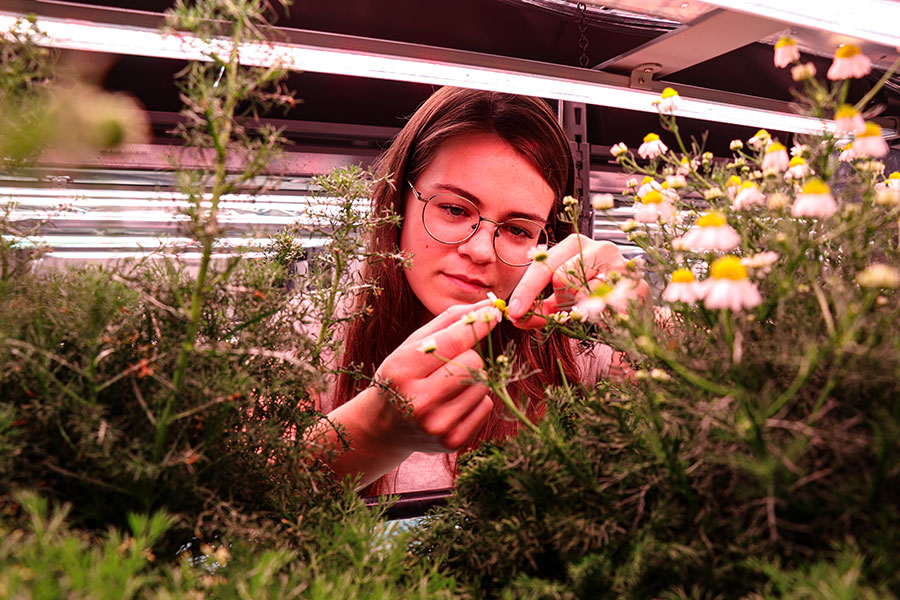In addition to being the most valuable fruit crop in Georgia, blueberries are one of the most popular fruit plants among backyard gardeners.
They are fairly easy to grow, given the right soil conditions, and have very few insect or plant disease problems compared to other fruits. When problems do arise, mineral deficiencies or pH problems are typically the culprits.
Blueberries are very well adapted to Georgia because they thrive in acidic soils with a pH between 4.5 and 5.2. To ensure that you have the proper soil pH and low calcium levels in your soil, complete a soil test prior to planting. In some backyard gardens, the soil pH and calcium levels can be very high, making the soil unsuitable for growing blueberries. High soil pH and calcium levels are often caused by excessive organic amendments or limestone (calcium carbonate) applications, which are necessary for growing most vegetables, lawns and landscape shrubs. Blueberries and a few other acid-loving plants are the exception. Limestone should never be applied around acid-loving plants. Acid-loving plants, such as blueberries, azaleas, rhododendrons, gardenias and camellias, should be segregated from other plants in your landscape or garden to avoid soil pH conflicts.
When a client calls about yellow leaves on their blueberry plants, it’s almost always related to a nutrient deficiency. More specifically, if both young leaves and mature leaves are uniformly yellow, it’s most often a nitrogen deficiency.
An iron deficiency can also cause yellowing of the youngest leaves, or newest growth, on blueberries.The leaf veins will remain a dark green color and will stand out in contrast to the yellow background of iron-deficient leaves. Iron deficiencies often occur when the pH is above 5.3 or when calcium or phosphorus levels are too high in the soil. If soil pH is greater than 5.3, sulfur will be recommended to decrease soil pH. Plants irrigated with water from deep wells in lime rock may exhibit a temporary iron deficiency during dry periods, when they are surviving solely on alkaline water.
A magnesium deficiency is occasionally seen in Georgia, and it usually occurs on older leaves. On young rabbiteye blueberry plants, the most common symptom of a magnesium deficiency is mature leaves that are pink on the edges and yellowish between the veins. When magnesium is low, based on a soil test, you can add Epsom salts (magnesium sulfate) at the rate of 3 ounces per plant to compensate for the deficiency. If calcium levels of the soil are too high, this will also amplify a magnesium deficiency.
One situation we often encounter is blueberries and other acid-loving plants being placed too close to the foundation of a home, sidewalk or driveway. Concrete and other masonry work can leach limestone and calcium into the surrounding soil and raise the soil pH too high for these types of plants. In these situations, the best option is to move blueberries away from the masonry structure.
When it comes to selecting blueberry varieties for home gardens, rabbiteye blueberries are the best choice. Rabbiteye blueberries are native to Georgia and grow well in all different parts of the state. It's important to plant more than one bush, so that cross-pollination can occur. Be sure to select varieties recommended for Georgia when shopping for plants. A list of recommended rabbiteye varieties is given in UGA Extension Circular 946, “Home Garden Blueberries,” which can be found online at extension.uga.edu/publications/detail.cfm?number=C946.
Georgia blueberry season is mid-April (south Georgia) through the end of July (north Georgia). Under good management, blueberry bushes will produce some fruit the second or third year after transplanting. By the sixth year, they will yield as much as 2 gallons per plant. The yield will continue to increase for several years as the plants grow larger.








